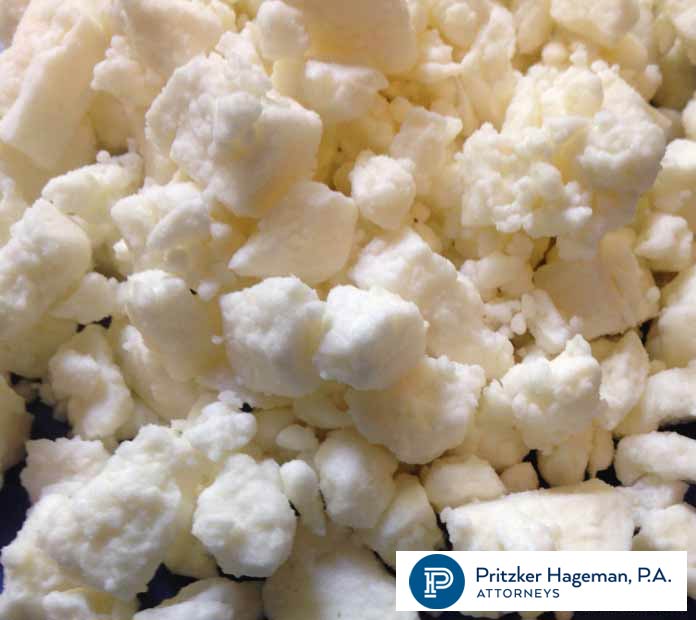Diabetics are at higher risk of contracting serious infections caused by foodborne pathogens. The primary reason for this is that, with diabetes, high blood sugar levels suppress the immune system, meaning dangerous pathogens may not be readily recognized and fought off with white blood cells and your body’s other defenses.1 This delay can result in a lengthier, more serious infection, hospitalization, and even death.

Diabetes can damage the cells that create stomach acid and the nerves that help move food throughout the intestinal tract. This may case food to stay in the intestines longer. If that food is contaminated with dangerous pathogens (bacteria, viruses, or fungi), those pathogens have more time to multiply and wreak havoc on the body.
Similarly, foodborne pathogens may reside in a diabetics’ kidneys for abnormally long periods of time. This is because diabetes can affect kidney function. In fact, diabetes is the most common cause of kidney failure.2
Food Safety Tips
- Do not eat raw or partially cooked seafood, meats, and eggs.
- Do not eat uncooked sprouts.
- Wash produce before you eat it.
- Do not eat unpasteurized milk or any product made with it.
- Do not eat soft cheese.
- Do not eat deli meats or hot dogs that have not been heated.
- Wash hands and surfaces often.
- Separate raw meat, poultry, seafood, and eggs from other foods in your grocery shopping cart, grocery bags, and in your refrigerator.
- Never place cooked food on a plate that previously held raw meat, poultry, seafood, or eggs without first washing the plate with hot soapy water.
- Don’t reuse marinades used on raw foods unless you bring them to a boil first and let them boil for 1 minute.
- Consider using one cutting board only for raw foods such as meat, poultry, and fish, and another only for ready-to-eat foods, such as bread, fresh fruits and vegetables, and cooked meat.
- Always use a reliable food thermometer to measure the internal temperature of cooked foods.
- Cook ground beef to at least 160ºF and ground poultry to a safe minimum internal temperature of 165ºF.
- Reheat fully cooked hams packaged at a USDA-inspected plant to 140ºF. For fully cooked ham that has been repackaged in any other location or for leftover fully cooked ham, heat to 165ºF.
- Cook seafood to 145°F. Cook shrimp, lobster, and crab until they turn red and the flesh is pearly opaque. Cook clams, mussels, and oysters until the shells open. If the shells do not open, do not eat the seafood inside.
- Cook eggs until the yolks and whites are firm. Recipes that include eggs should be cooked to 160°F.
- Cook all raw beef, lamb, pork, and veal steaks, roasts, and chops to 145ºF with a 3-minute rest time after removal from the heat source.
- Bring sauces, soups, and gravy to a boil when reheating. Heat other leftovers to 165ºF.
- Reheat hot dogs, luncheon meats, bologna, and other deli meats until 165ºF.
Foodborne Pathogens
- Campylobacter – Outbreaks have been linked to raw milk, chicken and shellfish. Initial symptoms appear 2 to 5 days after eating and include fever, headache, muscle pain, and diarrhea. Complications include pancreatitis, Guillain-Barre syndrome (paralysis that is usually temporary but can be permanent), reactive arthritis, sepsis, and death.
- Escherichia coli (E. coli) – Outbreaks have been linked to a number of products, including (but not limited to) ground beef, restaurant steak (mechanically tenderized), sprouts, lettuce, spinach, strawberries, raw (unpasteurized) milk, unpasteurized apple cider, frozen pizza, and raw cookie dough. Initial symptoms appear 1 to 9 days after eating food and include severe diarrhea that is usually bloody (indicating hemorrhagic colitis), abdominal cramps (worse than one can imagine), vomiting, and sometimes a fever. Complications include severe dehydration, hemorrhagic colitis (may lead to severe colitis and surgery to remove part of colon), hemolytic uremic syndrome (kidney failure and a host of other problems), thrombotic thrombocytopenic purpura (brain damage, kidney failure and other organ damage), sepsis, respiratory failure, and death.
- Listeria monocytogenes –Outbreaks have been linked to a variety of food products, including (but not limited to) hot dogs, deli meat (primarily ham), soft cheeses, raw milk and cheese, smoked salmon, sprouts, celery, lettuce and bagged salad, ice cream, and caramel apples. Initial symptoms of disease (listeriosis) appear within 2 to 6 weeks (but occasionally as long as 2 months). The initial symptoms of listeriosis include fever, chills, headache, backache, sometimes upset stomach, abdominal pain, and diarrhea. Complications include listeriosis meningitis, sepsis, and death.
- Salmonella – Outbreaks have been linked to a number of food products, including (but not limited to) chicken, ground beef, eggs, raw milk and milk products, sprouts, lettuce salad, tomatoes, cilantro, and other produce. The initial symptoms appear 6 to 72 hours after eating and include stomach pain, diarrhea (can be bloody, which is a sign of colitis), nausea, chills, fever, and headache. Complications include severe dehydration, colitis, Salmonella meningitis, sepsis, and death.
- “Food Safety for People With Diabetes.” FDA. http://www.fda.gov/downloads/Food/FoodborneIllnessContaminants/UCM312796.pdf
- “Kidney Disease of Diabetes.” NIH National Institute of Diabetes and Digestive and Kidney Diseases. http://www.niddk.nih.gov/health-information/health-topics/kidney-disease/kidney-disease-of-diabetes/Pages/facts.aspx

